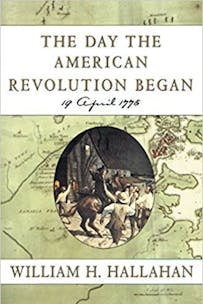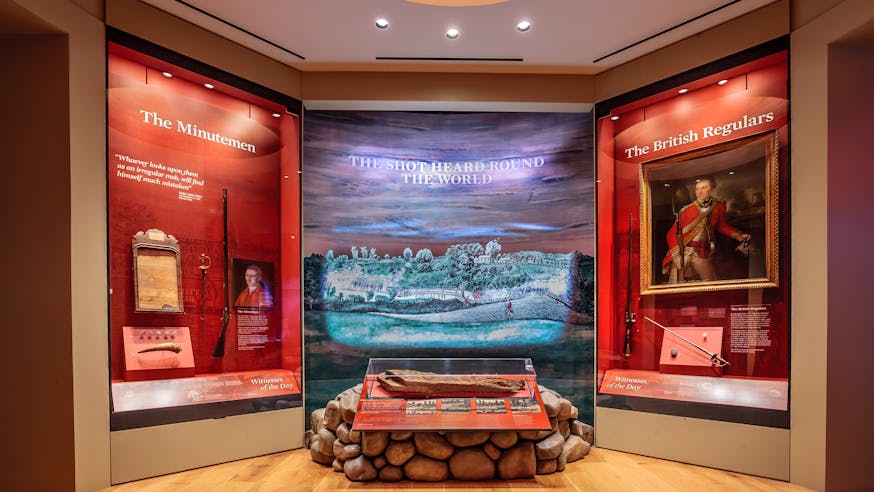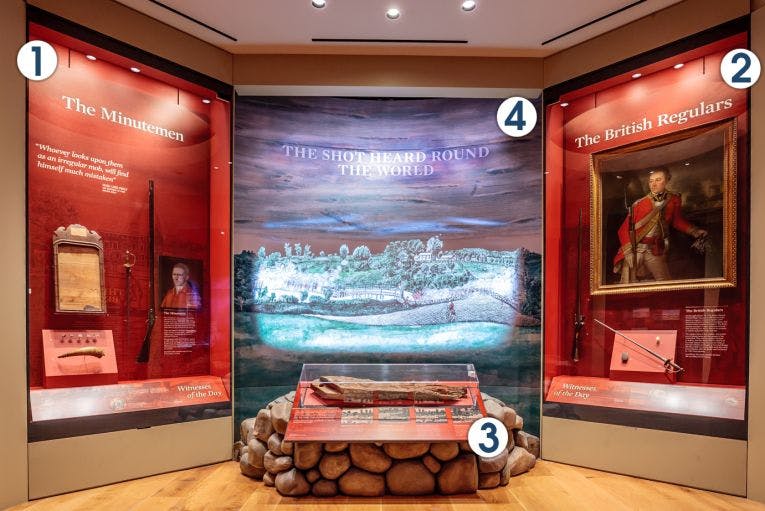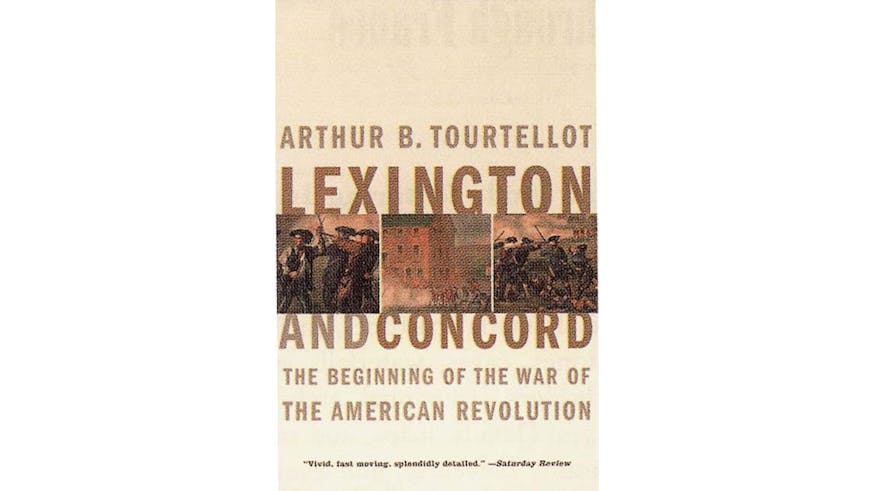Read the Revolution
The Day the American Revolution Began
April 12, 2017
Purchase the book from Harper Collins Publishers.
In the early morning hours of Wednesday, April 19, 1775, British troops crossed Boston Harbor with the intention of marching to Concord, Massachusetts to seize military supplies stored in the town by Patriot militiamen. Anticipating the British actions, an alarm was raised throughout the countryside by American silversmith Paul Revere and dozens of other riders who warned the colonial militia and minutemen that the regulars were on the road to Concord. By 5 am, the simmering tensions between the American colonists and the British government would reach their breaking point. The events of April 19 would change the world forever.
This day, immortalized in Ralph Waldo Emerson’s poetry as the ’shot heard round the world,’ is recounted by military historian William H. Hallahan in The Day the American Revolution Began: 19 April 1775. Hallahan’s play-by-play of the days and weeks that followed the Battle of Lexington and Concord moves from Boston to New York, to Philadelphia and ultimately to London, as the colonists and King George first hear the news about that fateful day.
Excerpt
In Lexington, Paul Revere found that in his absence one of the two mounted scouts Captain Parker had dispatched had returned to announce that there was no army on the road. He had found nothing. The whole military maneuver was a feint of no consequence. Just another false alarm.
But as Revere was entering the tavern to get Hancock's trunk, the other mounted scout came pounding up the roadway yelling that the regulars were right behind him, little more than a mile away and doing a ground-eating quick-march.
Captain Parker ordered the drummer to beat a call to arms. Then he assembled his militia unit-now seventy-seven strong-and lined it up in two ranks along the green. He was an experienced officer with combat experience who understood that the regulars would immediately take this posture as a challenge. That he meant to do battle was indicated in his instructions to the troops: ‘Don't fire unless fired upon. But if they want a war let it begin here.’
The militiamen stood in silence in the gathering light of dawn. The stirring birds called in the trees, and the odor of fresh-turned earth and apple blossoms hung in the air. Small knots of onlookers stood about on the common. Women and children peered from the windows of the houses around the green. Dorothy Quincy continued her vigil in the second-floor bedroom of the Clarke house.
All listened for the sound of British boot soles. It was five A.M.
At the first faint light at the tavern windows, Revere and Lowell stepped out of Buckman's and into the midst of the crowd of militia and onlooker s, struggling with the immensely heavy trunk, its brass fittings and the nail studs on the leather covering glimmering.
In Woburn, meantime, Hancock had just tucked up his napkin to feast on the salmon when a messenger rushed in to say that the regulars were on their way. Hancock and Adams, in a panic, ordered that the highly visible Hancock coach be put in some trees while they concealed themselves in the woods. The salmon was left on the table, uneaten.
They waited, but no regulars appeared. Tentatively, they emerged from hiding and decided to move farther away to yet another ‘modest'' house-that of Amos Wyman.
In Lexington, with shocking suddenness, the advance army unit under command of Marine Major John Pitcairn abruptly hove into sight on the roadway, quick-marching directly toward the green and the militia assembled there.
With Pitcairn at the head of the column were three other officers, including Major Edward Mitchell, who must have been saddle-sore in the extreme, having been mounted, and without any sleep, for nearly twenty-four hours. On foot were Lieutenant Barker and Lieutenant Gould, who would have prominent roles in the action that followed that day.
From his horse, Major Pitcairn cried out to the militia: ''Throw down your arms! Ye villians, ye rebels.’
Colonel Parker ordered his men to disperse, and they started to obey. None had thrown down their arms, but many of those who had heard Parker's command turned away and showed their departing backs to the British.
Then a shot was fired.
Long months of pent-up resentment in the British troops exploded. Apparently without orders from any of their officers, the regulars fired a volley at the militiamen, then charged with their bayonets. Their officers were unable to control them.
At the height of this action, Colonel Francis Smith arrived with the main contingent of troops and saw British regulars running amok, firing their guns, preparing to assault private houses, and moving menacingly toward Buckman's Tavern. Smith turned to a drummer and ordered him to play ‘Down Arms’ over and over. Finally, reluctantly, the troops came to a heel. When the officers restored the angry troops to their ranks, the town green revealed a shocking scene.
Militia Captain Parker's kinsman, Jonas Parker had been wounded, and while lying on the ground attempting to load his gun, he had then been bayoneted fatally. Townsman Jonathan Harrington fell, blood flowing from his breast. With his wife watching from a window in their house, he stood up and stretched out his hands toward her, then fell again. On his hands and knees, he crawled across the road. She ran to the front door, opened it, and looked down. There, on their doorstep, he died. Two others running from the common were shot, presumably in the back.
In all, eight militiamen lay dead and nine others were wounded. If Colonel Smith's arrival had been delayed a few more minutes, the carnage might have been much greater.
Only a few of the militia had managed to return fire. Jonas Parker, John Monroe, Ebenezer Monroe, Jr., and others got off shots before leaving the line. Solomon Brown and Jonas Brown fired from behind a stone wall; one other person fired from the back door of Buckman's house; Nathan Monroe, Lieutenant Benjamin Tidd, and others retreated a short distance, turned, and fired.
Major Pitcairn's horse had received two minor injuries, and one regular, Private Johnson on the 10th Foot, was slightly wounded in the thigh. Johnson's luck didn't hold for long; he was later wounded mortally at Bunker Hill.
There were many eyewitnesses to the action at Lexington: militia; British regulars, officers and troops; and bystanders; as well as the women and children looking out from the windows of the houses around the common. Many kept diaries, and still more testified in affidavits collected later by the Committee of Safety.
But even today the question persists: Who fired the first shot?
Sign Up
Get Read the Revolution features right to your inbox.
Tags
Learn More

Remembering the First Shot of the Revolutionary War

Witnesses of the “Shot Heard 'Round the World"
